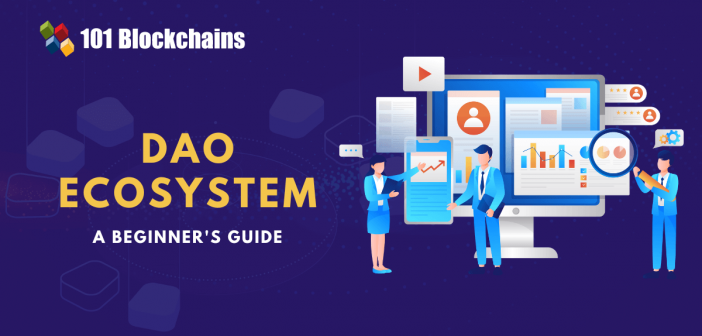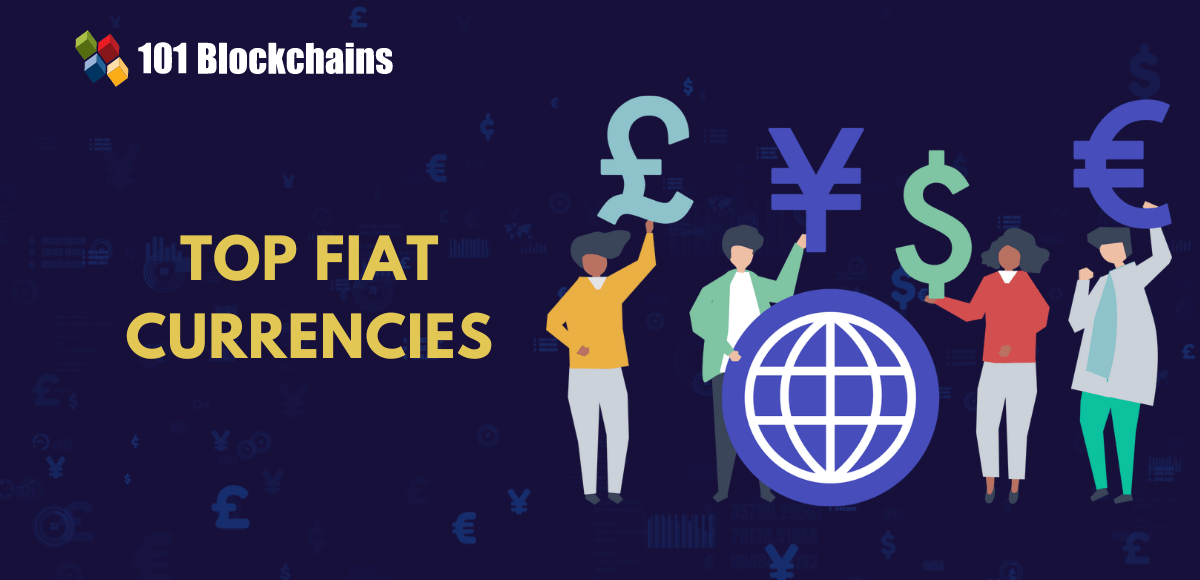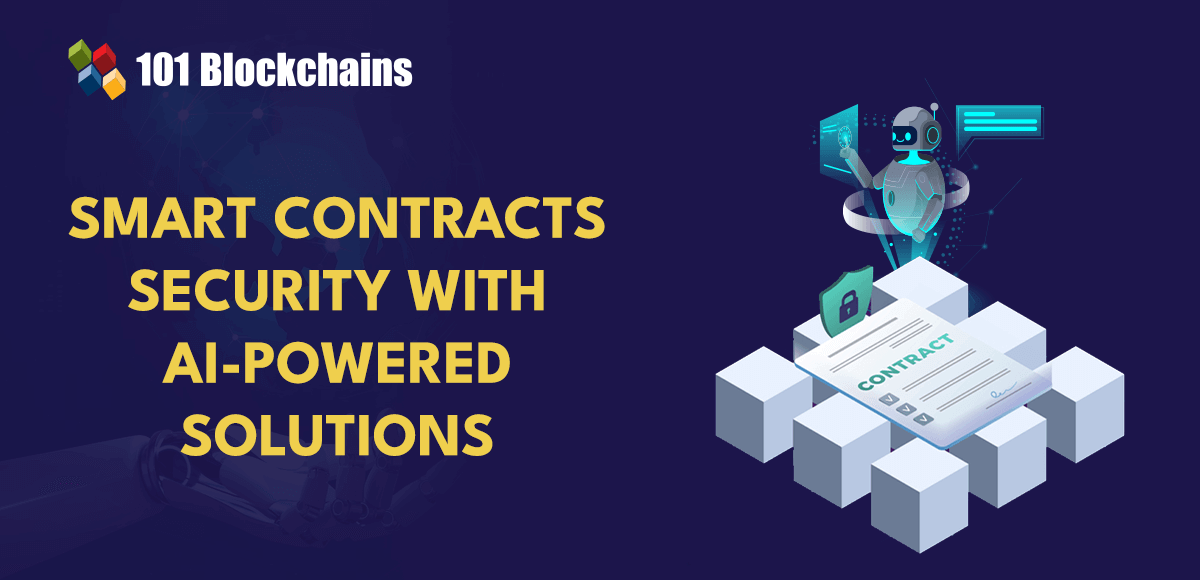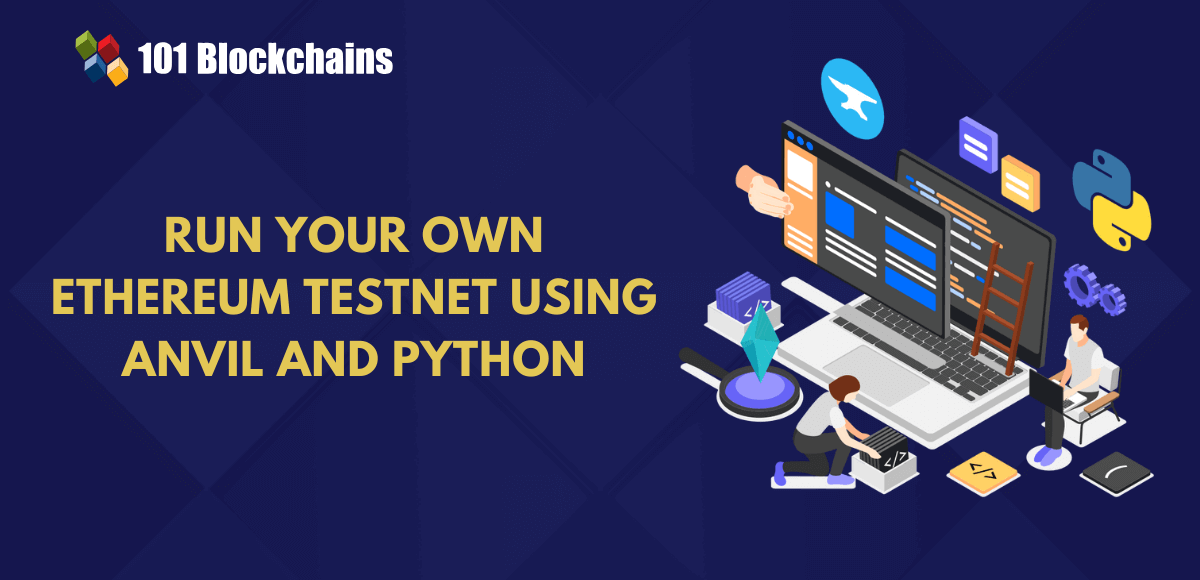Decentralization introduced many conclusive benefits for the transformation of digital technologies worldwide. For example, information transfer can be more secure and transparent. Therefore, the DAO ecosystem has significant relevance amidst the ongoing discussions regarding the arrival of web3. Decentralized autonomous organizations can help in building organizations without any centralized controlling authority. Irrespective of the reasons for developing a DAO, the primary goal would focus on ensuring community ownership.
Interestingly, you would not run short of examples for real-world applications of DAOs, leading to a thriving ecosystem. What makes up the foundation of the ecosystem of DAOs? How will the DAO blockchain ecosystem play a crucial role in defining the future of web3? The following post helps you find out the answers with an introduction to DAOs and how they work. Most important of all, you can also learn about the popular examples of DAO and important components in the ecosystem.
Excited to develop fluent knowledge of the DAO ecosystem? Enroll Now in DAO Fundamentals Course!
Definition of DAOs
The foremost factor you need to understand in a decentralized autonomous organizations ecosystem is the definition of DAOs. Decentralized autonomous organizations are basically entities that can help a distributed group of individuals work together to achieve specific goals. The operations of DAOs are governed by a shared set of conditions imposed on a blockchain network.
The conditions, or the rules, are generally integrated with smart contracts through the ‘governance frameworks.’ You can think of DAOs as any other organization, albeit without the hierarchical structure. Decentralized autonomous organizations follow a distributed structure, where the users can interact with each other in accordance with the conditions specified through ‘code’ which is implemented on the blockchain.
Another highlight in a description of the DAO ecosystem explained for beginners would also point at the way DAOs do not depend completely on automation. As a matter of fact, most of the decentralized autonomous organizations of today do not use automated processes for operations. On the contrary, the majority of DAOs depend on subjective coordination among a group of human participants. Does this mean that DAOs are under the centralized control of a few people? No, the autonomy for participants depends on the type of project and relevant governance framework.
Learn the concepts of Decentralized Autonomous Organizations and their role in web3 with DAO Flashcards
What can You Find in the DAO Ecosystem?
The DAO web3 ecosystem is in the initial stages of development and would take some time before achieving mainstream applications. The ideas about DAOs and the different governance models have been around for quite some time. However, the focus on DAOs has been increasing by humongous margins in recent times, particularly due to the rise of DeFi. As time progresses, the DAOs ecosystem would evolve further into the division of larger DAOs into smaller and specialized DAOs.
Many examples within the modern DAO ecosystem have showcased the potential for addressing multiple use cases. New and smaller DAOs, such as guild or curator DAOs, have been successful in establishing coordination among members. The niche DAOs have been developed around community channels and tools emphasizing the use of simpler and safer DAO frameworks such as Snapshot or Moloch.
Another interesting highlight in the DAOs ecosystem refers to the growth of relationships between DAOs. For example, many smaller DAOs have developed the capabilities for communicating with and delivering distinct functionalities to big blue-chip DeFi communities and reserves. However, the growth of such interactions among DAOs, spanning multiple ecosystems and governance frameworks, would call for transparency and standardization. Therefore, one of the first additions in discussions about the DAO blockchain ecosystem would refer to the classification of DAOs. Let us take a deep dive into the DAOs ecosystem with a glimpse of the different variants of DAOs.
Build your identity as a certified blockchain expert with 101 Blockchains’ Blockchain Certifications designed to provide enhanced career prospects.
Types of Decentralized Autonomous Organizations
The discussion about the DAO ecosystem would emphasize the different variants of DAOs that are functional today. You should notice that DAOs pursue specific objectives, which serve as the shared goals for everyone in the DAO. Therefore, you are more likely to encounter different variants of DAOs according to their objectives. Here are a few important categories of DAOs with examples for each category.
-
Protocol DAOs
Protocol DAOs refer to the ones developed with the objective of facilitating governance for decentralized applications. Some protocols can distribute governance tokens to the existing and previous users for voting on decisions regarding the protocol. The network decisions might include smart contract upgrades or modifications in protocol parameters.
Protocol DAOs such as Compound, Yearn Finance, and Aave prove their dominance in the emerging DeFi sector. Therefore, the protocol DAOs are an important highlight in any description of the DAO ecosystem explained with clarity. However, the complicated and technical nature of decisions implies that certain protocols have only selected delegates with the knowledge and skills required to achieve governance.
-
Project DAOs
The project DAOs are also an exclusive addition to the continuously expanding DAOs ecosystem. Project DAOs are almost similar to the conventional structures of an organization. Such types of DAOs are created primarily for the development and shipping of products and services, generally with the support of incentives and token economic models.
All the revenues garnered by the organization return to a treasury under the governance of stakeholders. Most important of all, project DAOs can also hold the governance tokens from different protocols. As a result, they can develop as powerful meta-governance decision makers within the external governance process.
Want to learn the fundamentals of tokenization? Enroll Now in Tokenization Fundamentals Course
-
Creator DAOs
Creator DAOs are another popular entry in the decentralized autonomous organizations ecosystem for their unique take on the development of fractionalization of NFTs. The creator DAO works for fractionalizing non-fungible tokens, thereby representing a valued asset alongside ensuring distribution of ownership to various supporters and followers.
Subsequently, the new owners of the fractional NFTs could help in the co-creation, promotion, marketing, and distribution of creation to ensure collective ownership, experience, and identity. Popular examples of creator DAOs include RAC and Mirror, which have planned some experimental innovations in this field.
-
Curator DAOs
Curator DAOs have also evolved as another major addition to the DAO blockchain ecosystem for their unique functionalities. It is also similar to an investor DAO albeit with a distinguished focus on the curation of crypto assets and NFT art. Curator DAOs could offer better contributions in terms of expertise, capital, and brand for curating almost anything. Subsequently, the DAO members can share the rewards alongside growth in a curated portfolio as well as the fees generated through curation services.
Aspiring to Become a Certified NFT Expert? Enroll in Certified NFT Professional (CNFTP) Course Now!
-
Investor DAOs
Investor DAOs are another notable example of decentralized autonomous organizations with a significant role in the emerging ecosystem. The basic goal of investor DAOs focuses on ensuring the collection of funding for special projects. You can think of investor DAOs as the decentralized alternatives of a venture capitalist firm.
-
Guild DAOs
The DAO web3 ecosystem has also been focusing on guilds as a valuable addition to the ecosystem. Guild DAOs emphasize talent coordination for facilitating high-quality contracted service to buyers. Many freelancers and individual users could capitalize on the distribution and marketing channels of the guild DAOs to connect with top projects. At the same time, projects could also identify suitable talent for specific jobs throughout the ecosystem. The guild members can contribute anything ranging from code, collaboration, content, educational programs, products, or contracts.
-
Community DAOs
The applications of community DAOs also make a notable mark in the DAO ecosystem as they can develop around the interests of a specific individual or group. The applications of DAO tokens in the case of community DAOs could also help in creating boundaries around a specific social jurisdiction. Most important of all, members can receive benefits with the help of a closed network alongside perks.
Want to learn more about different types of DAOs in detail? Read here to Know The Different Types Of DAOs now!
Infrastructure for the DAOs Ecosystem
The detailed introduction to different types of DAOs showcases what you can expect in the ecosystem of DAOs. On the other hand, you must also note that the decentralized autonomous organizations ecosystem stands on a specific infrastructure. If all the different types of DAOs in the ecosystem need to grow further, the DAOs would need a diverse collection of tools.
The different tools can help in defining the infrastructure stack for DAO ecosystems. In addition, the DAO infrastructure stack also plays a vital role in the ecosystem through flexibility for the development of new governance mechanisms. Here is an outline of the common tools you can find in DAOs.
-
Governance Frameworks
The most striking element in any description of the working of the DAO ecosystem explained with clarity would refer to governance frameworks. Smart contracts serve as the primary foundation of governance frameworks, which help in implementing the rules of decentralized governance through a blockchain network.
The code underlying the smart contract offers specifications for all parameters which define the distribution of power. In addition, the smart contract code in governance frameworks for DAOs specifies the best practices for process execution and methods for casting votes.
Want to learn blockchain technology in detail? Enroll Now in Certified Enterprise Blockchain Professional (CEBP) Course
-
Controllers
The infrastructure stack of DAOs is practically incomplete without bringing controllers into the equation. Many governance frameworks feature a controller for helping users in achieving direct interaction with governance contracts by leveraging user interfaces. Generally, the controllers are developed by the same team behind scripting the governance framework. Controllers could provide data and APIs, which help in easier extraction and indexing of information alongside many comprehensive features.
-
Treasury
DAO ecosystem members have to reach specific agreements regarding treasury and capital allocation. The treasury is an important highlight of the DAO blockchain ecosystem as it emphasizes the secure and transparent storage of member funds. One of the common approaches followed for defining treasury in the DAO infrastructure stack would refer to the use of the smart contract-based multi-sig wallet. With such wallets, a minimum number of people must approve a particular transaction before it actually happens. In addition, some DAOs can prefer the approach for the storage of treasuries in smart contracts.
Start learning Blockchain with World’s first Blockchain Skill Paths with quality resources tailored by industry experts Now!
-
Work
The importance of work in the technical infrastructure underlying the working of DAO ecosystems can never go unnoticed. When you refer to ‘work’ in the case of a DAO, you would have to wonder about the implications of talent and contributions. Developers are working on creating new tools for measuring labor and output from different members of the DAO. On top of it, the ecosystem also needs to resolve complicated identity and trust issues.
-
Aggregators
The final aspect in the infrastructure of DAO web3 ecosystems would refer to aggregators, which serve as connecting links between the governance frameworks and different tools. The primary responsibility of aggregators would focus on taking away complexity from infrastructure and middleware to ensure better user experiences.
To know more about the development process of Decentralized app, Read this article: Beginner’s Guide To DApp Development
Bottom Line
The overview of important elements in the decentralized autonomous organization ecosystem showcase that DAOs are a progressive concept. With the exclusion of hierarchical control over an organization, DAOs can serve as the foundation for creating organizations of the future. However, the importance of each tool in the infrastructure stack and the variants for DAOs prove that anyone can contribute their efforts to DAOs. Most important of all, decentralized autonomous organizations are an integral part of web3, the internet of the future. Start learning more about DAOs and how they fit within the web3 landscape.
*Disclaimer: The article should not be taken as, and is not intended to provide any investment advice. Claims made in this article do not constitute investment advice and should not be taken as such. 101 Blockchains shall not be responsible for any loss sustained by any person who relies on this article. Do your own research!






